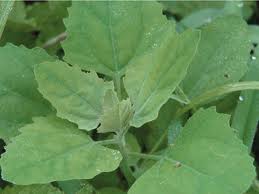Go ahead…eat your weeds!
Did you know that two of the most common weeds in our area are also some of the most nutritious plants growing in our gardens and yards?

Purslane contains more omega-3 fatty acids (alpha-linolenic acid in particular) than any other leafy vegetable plant.
Although purslane is considered a weed in the United States, it may be eaten as a leaf vegetable. It has a slightly sour and salty taste and is eaten throughout much of Europe, the middle east, Asia, and Mexico. The stems, leaves and flower buds are all edible.
Purslane may be used fresh as a salad, stir-fried, or cooked as spinach is, and because of its mucilaginous quality it also is suitable for soups and stews. Australian Aborigines use the seeds to make seedcakes. Greeks use the leaves and the stems with feta cheese, tomato, onion, garlic, oregano, and olive oil, add it in salads, boil it or add to casseroled chicken. In Turkey, besides being used in salads and in baked pastries, it is cooked as a vegetable similar to spinach. In Albania it is also used as a vegetable similar to spinach, mostly simmered and served in olive oil dressing, or mixed with other ingredients as a filling for dough layers of byrek. In the south of Portugal, purslane is used as a soup ingredient. In Pakistan, it is cooked like spinach in stews along with lentils or in a mixed green stew.
Besides having more omega-3 fatty acids than any other leafy vegetable plant, it also contains vitamins (mainly vitamin A, vitamin C, vitamin E, vitamin B, and dietary minerals such as magnesium, calcium, potassium, and iron.

Lamb’s Quarters also boasts great nutritional value. The leaves and young shoots may be eaten as a leaf vegetable, either steamed in its entirety, or cooked like spinach. This plant should be eaten in moderation due to high levels of oxalic acid. Lamb’s Quarters are high in protein, vitamin A, calcium, phosphorus, and potassium. Quinoa, a closely related species, is grown specifically for its seeds. The Zuni people cook the young plants’ greens.
(Source: Wikipedia, 2015)

Leave a Reply